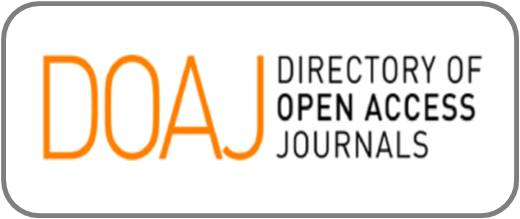Social Behavior of Bureaucrats in Rural Population Administration Services
DOI:
https://doi.org/10.47540/ijqr.v2i2.656Keywords:
Administration Services, Bureaucrats, Rural Population, Social BehaviorAbstract
Bureaucratic behavior is the main benchmark for achieving effective public services and assesses the government's most visible performance. Every act of bureaucrats always has social motives in providing administrative services. This study aims to determine the form of social behavior of bureaucrats in providing population administration services in rural areas through a sociological perspective. This research is located in Palakka Village, Barru District, Barru Regency. The method used is a qualitative approach with a descriptive type. Data were collected through in-depth interviews with 12 informants in the village. The results of this study indicate that the social background of rural communities is both a supporter and an obstacle to the performance of bureaucrats in rural areas. Social behavior that emerges from bureaucrats in rural areas is more likely to lead to value-oriented rational actions. Every behavior that appears responds to every situation faced in population administration services for people in rural areas.
References
Adeniji, A. A., Falola, H. O., & Salau, O. P. (2014). A modelling relationship between work satisfaction and faculty performance in the nigerian private universities. European Scientific Journal, 10(32).
Al-Besher, A., & Kumar, K. (2022). Use of artificial intelligence to enhance e-government services. Measurement: Sensors, 24, 100484.
Beer, C. (2008). The spatial accommodation practice of the bureaucracy of the Commonwealth of Australia and the production of Canberra as national capital space: A dialectical and prosaic history. Political Geography, 27(1), 40–56.
Boehmer-Christiansen, S. (2002). The geo-politics of sustainable development: bureaucracies and politicians in search of the holy grail. Geoforum, 33(3), 351–365.
Caiden, G. E. (2017). Maladministration Revisited. International Journal of Civil Service Reform and Practice, 2(1).
Chris Muellerleile, & Susan L. Robertson. (2018). Digital Weberianism: Bureaucracy, Information, and the Techno-rationality of Neoliberal Capitalism. Indiana Journal of Global Legal Studies, 25(1), 187.
del Monte, A., &Papagni, E. (2007). The determinants of corruption in Italy: Regional panel data analysis. European Journal of Political Economy, 23(2), 379–396.
Ekström, M. (2016). Causal Explanation of Social Action: The Contribution of Max Weber and of Critical Realism to a Generative View of Causal Explanation in Social Science. Acta Sociologica, 35 (2), 107–122.
Finocchiaro Castro, M., Guccio, C., Pignataro, G., & Rizzo, I. (2018). Is competition able to counteract the inefficiency of corruption? The case of Italian public works. Economia e Politica Industriale 2018 45:1, 45(1), 55–84. https://doi.org/10.1007/S40812-017-0086-5
Guasch, J. L., & Straub, S. (2009). Corruption and concession renegotiations.: Evidence from the water and transport sectors in Latin America. Utilities Policy, 17(2), 185–190. https://doi.org/10.1016/J.JUP.2008.07.003
Harahap, T. K. (2015). Ethics Green Open Space Public Service by Government Pekanbaru City. Procedia - Social and Behavioral Sciences, 211, 945–952.
Hunt, J., & Laszlo, S. (2012). Is Bribery Really Regressive? Bribery’s Costs, Benefits, and Mechanisms. World Development, 40(2), 355–372.
Ismail, A., Mahdi, N. M. N., Mat, N., Ali, M. H., & Ali, N. A. A. M. (2018). Administration of the Merit Pay Systems Enhancing Work Outcomes. Asian Journal of Accounting and Governance, 9(0), 99–110.
Jaye, C., Noller, G., Bryan, M., & Doolan-Noble, F. (2021). “No better or worse off”: Mycoplasma bovis, farmers and bureaucracy. Journal of Rural Studies, 88, 40–49. https://doi.org/10.1016/J.JRURSTUD.2021.10.007
Judge, W. Q., McNatt, D. B., & Xu, W. (2011). The antecedents and effects of national corruption: A meta-analysis. Journal of World Business, 46(1), 93–103.
Kagaari, J. R. K., Munene, J. C., &Ntayi, J. M. (2010). Performance management practices, information and communication technology (ICT) adoption and managed performance. Quality Assurance in Education, 18(2), 106–125.
Kreiss, D., Finn, M., & Turner, F. (2010). The limits of peer production: Some reminders from Max Weber for the network society. New Media & Society. 13(2), 243–259.
Peisakhin, L. (2012). Transparency and Corruption: Evidence from India. The Journal of Law and Economics, 55(1), 129–149.
Samwel, J. O. (2018). Effect of Employee Relations on Employee Performance And Organizational Performance-Study of Small Organizations In Tanzania. International Journal of Economics, Business and Management Research, 2(04).
Sundberg, M. L., & Michael, J. (2016). The Benefits of Skinner’s Analysis of Verbal Behavior for Children with Autism. Behavior Modification, 25(5), 698–724.
Thorne, S. (2016). Interpretive description: Qualitative research for applied practice, Second edition. Interpretive Description: Qualitative Research for Applied Practice, Second Edition, 1–336.
Yang, F., & Wen, D. (2021). Combating workplace loneliness climate and enhancing team performance: The roles of leader humor and team bureaucratic practices. Journal of Business Research, 136, 305–315.
Published
How to Cite
Issue
Section
Copyright (c) 2022 Ridwan Syam, Sakaria To Anwar, Atma Ras, Ismaniar Risal Basir

This work is licensed under a Creative Commons Attribution-ShareAlike 4.0 International License.

















